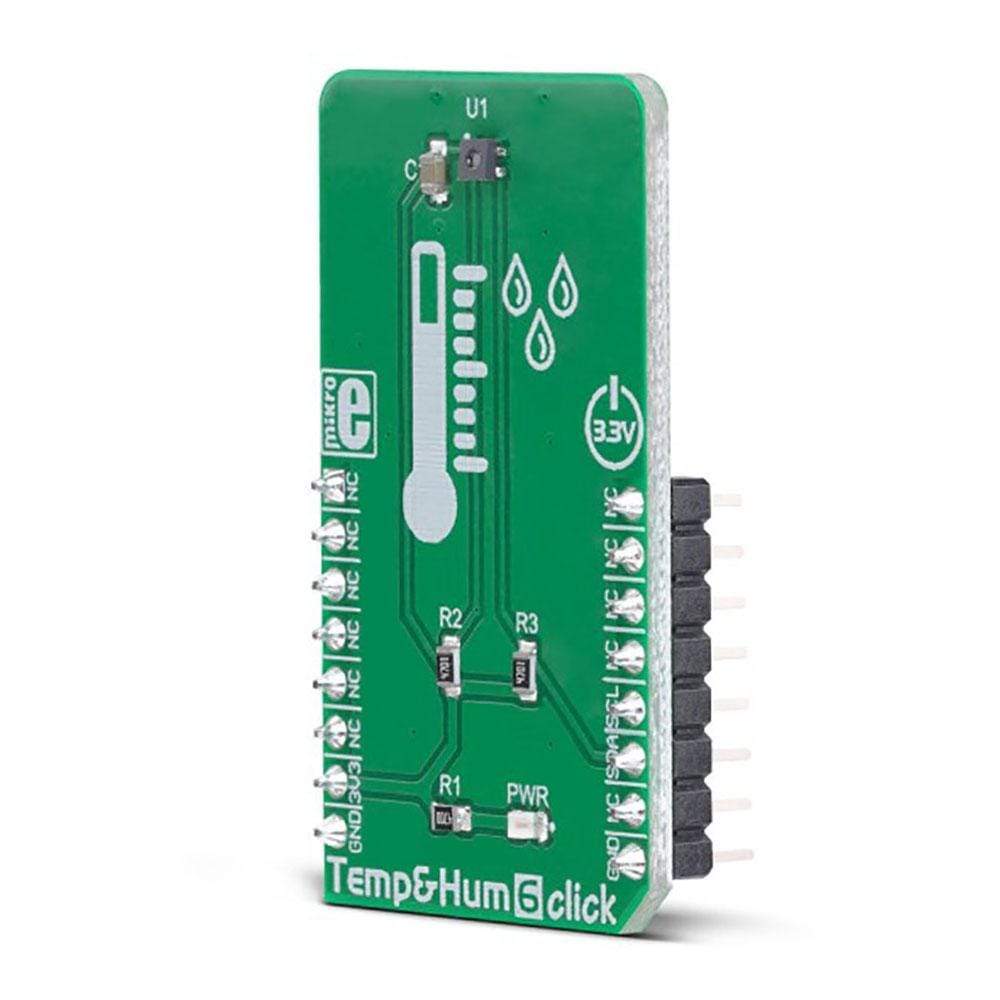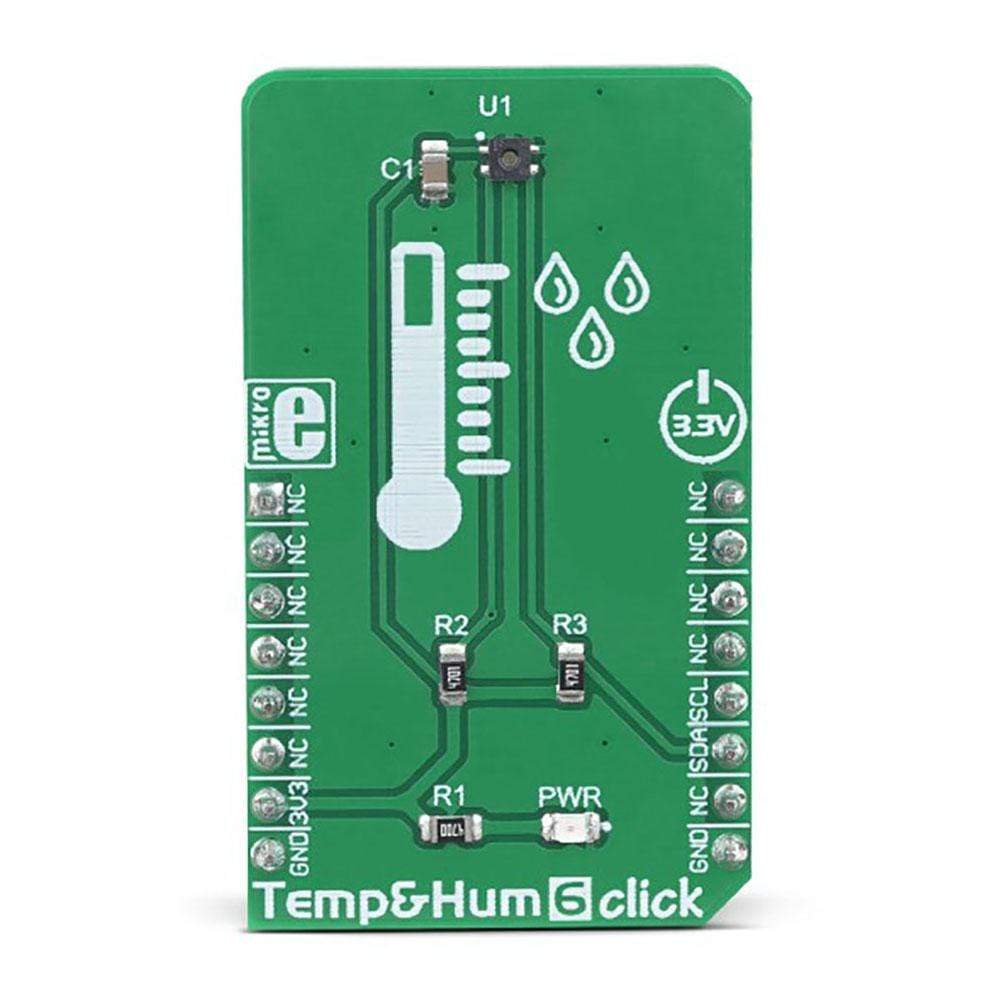


Key Features
Overview
The Temp&Hum 6 Click Board™ is a smart temperature and humidity sensing Click Board™, packed with features that allow straightforward integration into any design. It accurately measures a wide range of temperature and relative humidity values. The ENS210 sensor IC used on this Click Board™ is an ultra-accurate temperature and relative humidity sensor (RH), featuring very low drift, very low power consumption, small hysteresis, and excellent long-term stability. Thanks to its advanced logic back-end, the sensor IC can offer measurement readings in Kelvin and %RH directly over the I2C interface.
Temp&Hum 6 Click Board™ is supported by a mikroSDK compliant library, which includes functions that simplify software development. This Click Board™ comes as a fully tested product, ready to be used on a system equipped with the mikroBUS socket.
Downloads
Le Temp&Hum 6 Click Board™ est un capteur intelligent de température et d'humidité Click Board™, doté de fonctionnalités qui permettent une intégration simple dans n'importe quelle conception. Il mesure avec précision une large gamme de valeurs de température et d'humidité relative. Le circuit intégré de capteur ENS210 utilisé sur ce Click Board™ est un capteur de température et d'humidité relative (HR) ultra-précis, présentant une dérive très faible, une très faible consommation d'énergie, une faible hystérésis et une excellente stabilité à long terme. Grâce à son back-end logique avancé, le circuit intégré de capteur peut offrir des lectures de mesure en Kelvin et en % HR directement sur l'interface I2C.
Temp&Hum 6 Click Board™ est supporté par une bibliothèque compatible mikroSDK, qui comprend des fonctions qui simplifient le développement logiciel. Ce Click Board™ est livré sous la forme d'un produit entièrement testé, prêt à être utilisé sur un système équipé du socket mikroBUS.
| General Information | |
|---|---|
Part Number (SKU) |
MIKROE-3270
|
Manufacturer |
|
| Physical and Mechanical | |
Weight |
0.018 kg
|
| Other | |
Country of Origin |
|
HS Code Customs Tariff code
|
|
EAN |
8606018713974
|
Warranty |
|
Frequently Asked Questions
Have a Question?
Be the first to ask a question about this.



